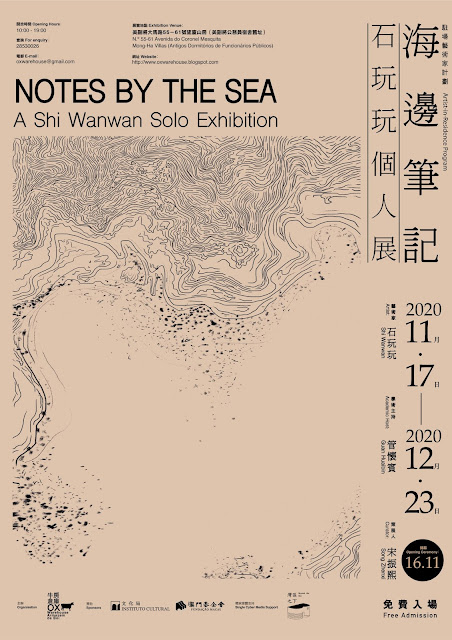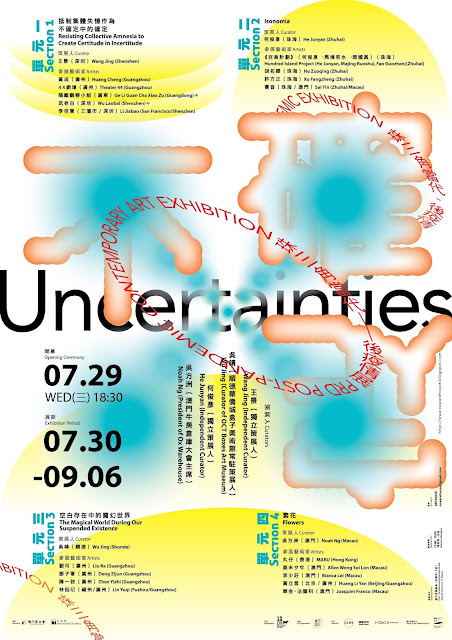A Couple of Forms

A Couple of Forms
Artists Gregory Maass from Germany and Nayoungim from South Korea, present their Artist-in-Residence exhibition at the Ox Warehouse, Macau.
In an effort to introduce international contemporary art forms to Macau audiences, the local art space of the Ox Warehouse has invited two artists at the beginning of 2009 from Germany and South Korea, for an “artist-in-residence” program in Macau. Gregory Maass and Nayoungim both graduated from the famous L’École Nationale Supérieure des Beaux-Arts of Paris in 1996 and have been working as “traveling artists” and partners since 2004. Having traveled widely and exhibited in Europe, America, Korea and Japan, the artists have found themselves preparing an art exhibition in a Chinese territory for the first time. During their 3-week stay in Macau, the couple of artists have not only presented a brand new installation exhibition, but have also held a one-week workshop with local artists on the theme of installation art.
Frank Lei, art director of the Ox Warehouse and curator of the show, has introduced the artist-in-residence and workshop program with a clear pedagogic intention in his mind. “The art form of installation has been very popular in Macau for nearly a decade now, but in general, people’s perception of it remains vague. So-called “Installation Art” is often practiced here as a mere combination of objects, without consideration to creating a connection of thoughts and feelings between the work and the viewer,” Frank explains. “Through the exhibition and workshop with these two experienced artists, I hope we will be able to share their experience and hence help to develop a more sound attitude towards the creation of forms on the art scene in Macau.”
So after two weeks of preparations, the exhibition “You got to be like water” was inaugurated at the Ox Warehouse on the 11th of January. According to the introduction text written by the artists, the title was in fact a quote from an interview with Bruce Lee in which he described how to become a martial art champion. After using the seemingly irrelevant martial arts secret of Bruce Lee as the introduction title, viewers are further led into a world of strangeness. A smoking panda made of six rectangular wooden boxes is installed next to a group of suspended tables and boards. And on top of these hanging objects, are two big
A Couple of Forms
Gregory Maass from Germany and Nayoungim
letters made of neon tubes that can be read as “XO”. Apart from this brief inscription, a hidden sentence can also be read through a combination of social group photos taken from local newspapers. The sentence goes, “BE INVISIBLE”.
The whole setting of the art works is infused with a sense of enigma, activating the viewers to participate and guess. But while our Macau viewers are often too eager to decipher visual forms into literal meanings, it would be a misunderstanding if we push it too far. According to the artists, there are not so many meanings to be found. The best they did to offer an explanation during their one-week workshop about installation art was to tell us the anecdotes behind every single object. “We decided to use a panda because during the first three days of our arrival, we saw news about pandas every night on television. And with a bag of dry ice installed in the nostrils, we have made a smoking panda. It’s fun in this way I think.” Gregory Maass explains. As for the methods and experience of their creative path, the artists are more than economical in their words. “There is not much to say. It works, because the form is there.”
Indeed, the form is there. And in the language of art forms, verbal words are not a necessity. The articulation of this language is situated among different elements, be it visual or spatial. One of the most pronounced examples in this case is the use of mirrors in the
exhibition. A set of three rectangular mirrors was installed on the corner between one of the walls and the ceiling reflecting the giant panda, creating a feeling of perspective and reflection in the rather small space of the gallery. The materials used were all found “in-situ”; in this case mostly wooden objects, thus creating a coherence of visual textures for the viewer. Despite the stinginess of the artists to provide any veritable meanings to what they are trying to convey through their installation art works, their generosity is to be found behind every decision and detail that they have considered in the making of shapes, colors, lightings and space. And the degrees of subtlety and sensitivity applied in these articulations define how skillful and effective this kind of art can be at touching the viewer.
So forms have their own language and in the case of an art exhibition, it is often the object to contemplate. The nature of Gregory Maass and Nayoungim’s work is highly demonstrative in exactly this way. But what if we have not yet learnt the language? Where can we start to communicate? For the artists who are concerned exclusively about forms but not pedagogy, this is where it falls short. What is left is just the experience; an “esthetic experience” if you will. But for the pedagogue, a tangible way has yet to be found, so that artistic ideas are not mere objects of contemplation, but a tool to bring our society to a higher level of awareness and constructive meaning.
photos and text by Alice Kok
Quotation: macau Closer (Feb.)
http://www.macaucloser.com/a_couple_of_forms.html


留言